When people think of yellow finches in the United States, they typically picture the American goldfinch. This beautiful, bright yellow and black bird ranges throughout the United States, as well as much of Canada and parts of Mexico. But did you know there are actually lots of different yellow finches? The Fringillidae family of true finches consists of around 240 species, and several of those species have yellow plumage.
To answer the question, where do yellow finches nest, we must consider that yellow finches range over much of the world and that nesting habits can vary from species to species. Let’s take a look at some of the yellow finches from around the world.
American Goldfinch
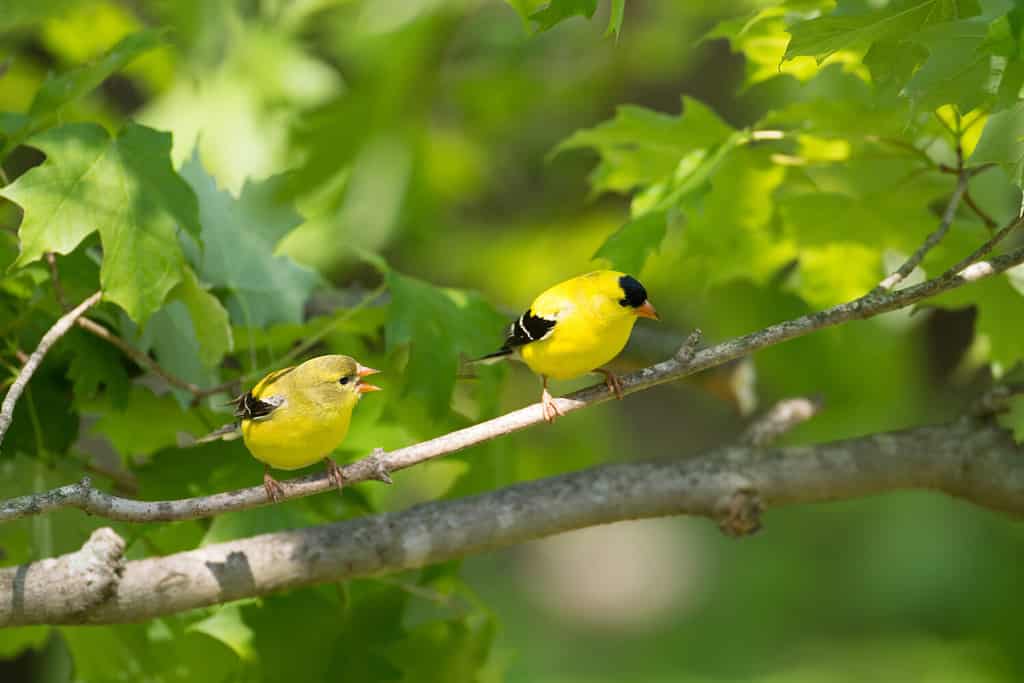
The American goldfinch usually nests in a tall shrub or small tree near an open area with ample weeds.
©Tony Campbell/Shutterstock.com
The American goldfinch (Spinus tristis) nests mainly in open areas rather than deep in the forest. They tend to nest near ample food sources, meaning open fields or meadows with plenty of seedy weeds. They usually place their tightly woven, cup-shaped nest in a large shrub or a small tree. American goldfinches begin nesting later than most birds, from late June through August. Females lay 2 to 7 eggs per clutch, and usually raise only one brood per year. Their incubation period lasts 12 to 14 days. Nestlings fledge after about 12 days.
Black-capped Siskin
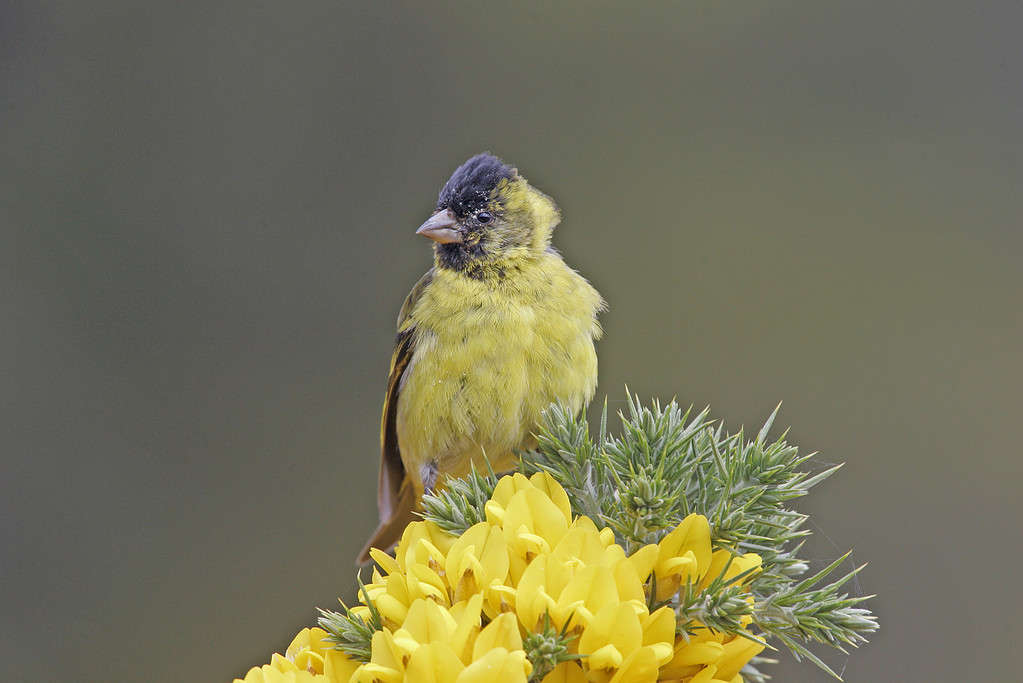
The black-capped Siskin,
Spinus atriceps, lives in Mexico and Guatemala.
©MikeLane45/iStock via Getty Images
The black-capped siskin (Spinus atriceps) lives in far southern Mexico and Guatemala. This greenish-yellow finch with a black cap and black markings nests primarily in pine, spruce, or mixed pine and oak forests at altitudes above 6,500 feet. They make cup-shaped nests, usually well hidden in the branches of coniferous trees. Black-capped siskins are closely related to the familiar pine siskin which ranges over most of North America. Both have a common ancestor in the Eurasian siskin.
Antillean Siskin
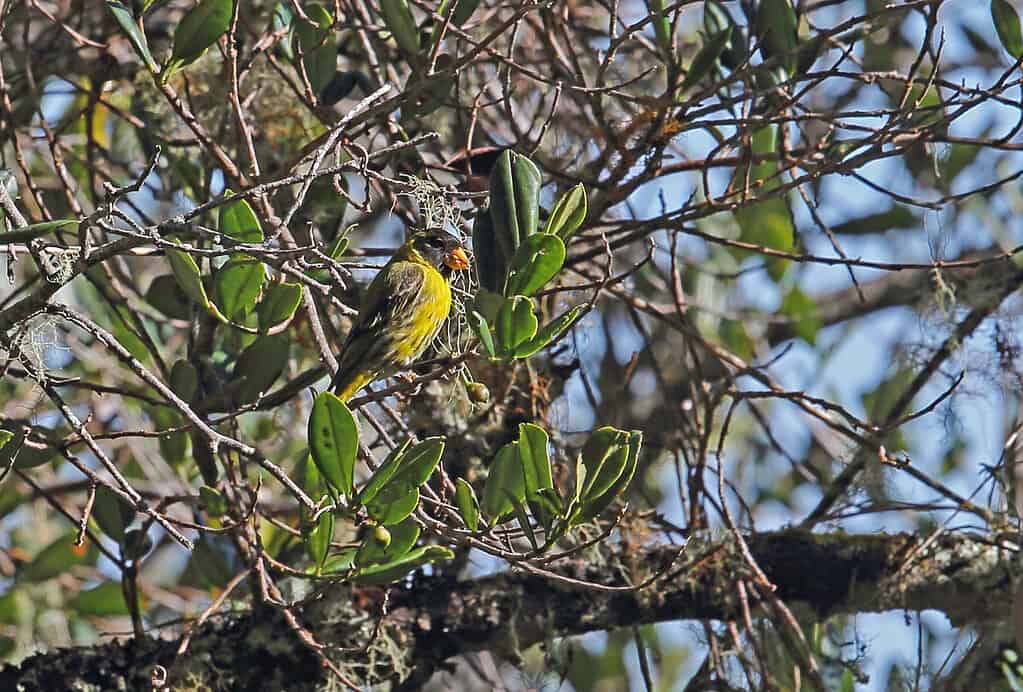
The Antillean siskin,
Spinus dominicensis, is endemic to the island of Hispaniola in the Caribbean.
©neil bowman/iStock via Getty Images
The Antillean siskin (Spinus dominicensis) is endemic to the island of Hispaniola, in both the Dominican Republic and Haiti. This bird, with a black head and yellow bill, has yellow feathers with black interspersed on the back, tail, and wings. As the only member of the Spinus genus known to live in the Caribbean, the Antillean siskin prefers subtropical or tropical montane pine forests near grasslands. It may be especially drawn to disrupted forests where plenty of weeds can grow. Antillean siskins build cup-shaped nests with grass, twigs, and moss in pine trees.
Eurasian Siskin
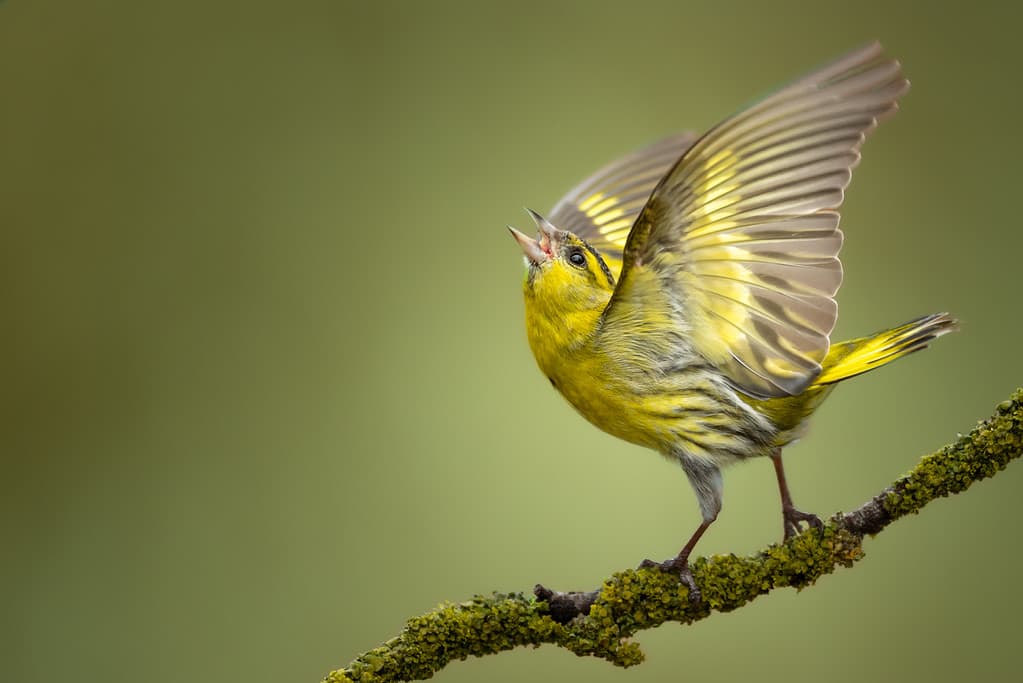
The Eurasian siskin,
Spinus spinus, is a small finch native to Europe and Asia.
©nieudacza/iStock via Getty Images
The Eurasian siskin (Spinus spinus) breeds in much of Europe and Asia, and it migrates south as far as northern Africa. This bird has a huge population, estimated between 45 million and 80 million mature individuals. It lives in forests and shrublands in both boreal and temperate areas. Eurasian siskins range from lowlands to mountains, preferring coniferous or mixed forests in most areas. This perky yellow bird with a black cap and a white belly tends to prefer spruce trees for nesting. Pairs make bowl-shaped nests on the ends of branches. They construct the nests from twigs, moss, and lichen, and use soft materials for lining.
Atlantic Canary
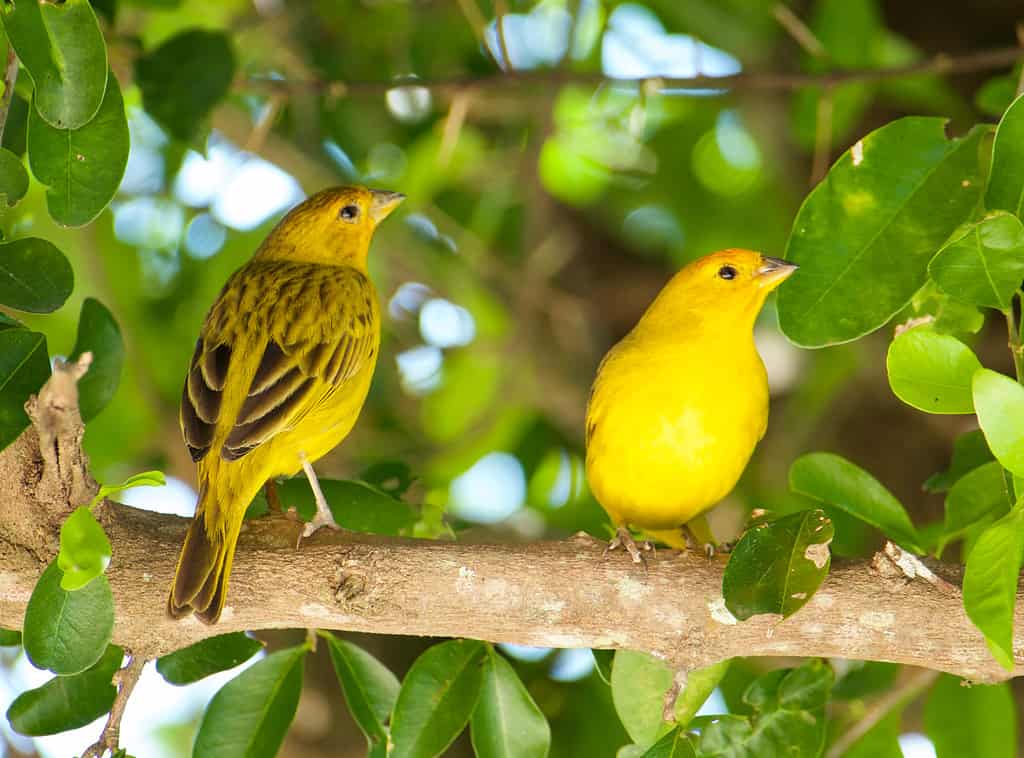
The Atlantic canary is native to the Canary Islands, the Azores, and Madeira.
©Afonso Farias/iStock via Getty Images
The Atlantic canary (Serinus canaria) also belongs to the Fringillidae family of finches. This species comes from the Canary Islands, the Azores, and Madeira off the coast of Portugal and Morocco in the Atlantic Ocean. Atlantic canaries nest in lowland and submontane forests, typically consisting of pine and laurel trees, except on Madeira, where they tend to nest in open areas. The Atlantic canary builds cup-shaped nests from available materials such as twigs, grasses, moss, lichen, leaves, other plant fibers, and animal hair. They usually nest in small trees, and they have clutches of 3 to 4 eggs. The domestic canary is a subspecies of the Atlantic canary.
Yellow-crowned Canary
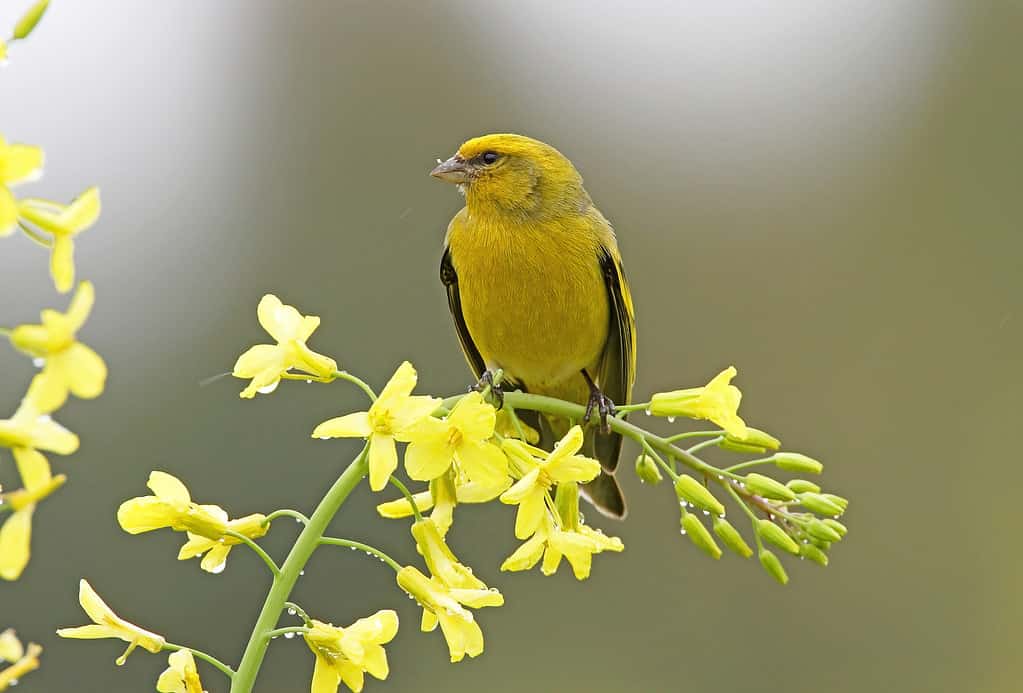
The yellow-crowned canary is native to eastern Africa.
©neil bowman/iStock via Getty Images
The yellow-crowned canary (Serinus flavivertex) belongs to the same genus as the Atlantic canary. This yellow finch has greenish-yellow feathers on its back and black wings with yellow bars. Yellow-crowned canaries live in open grasslands, fields, and forest edges in hilly and mountainous regions of eastern Africa from Ethiopia to Mozambique. They build cup-shaped nests from available materials.
European Serin
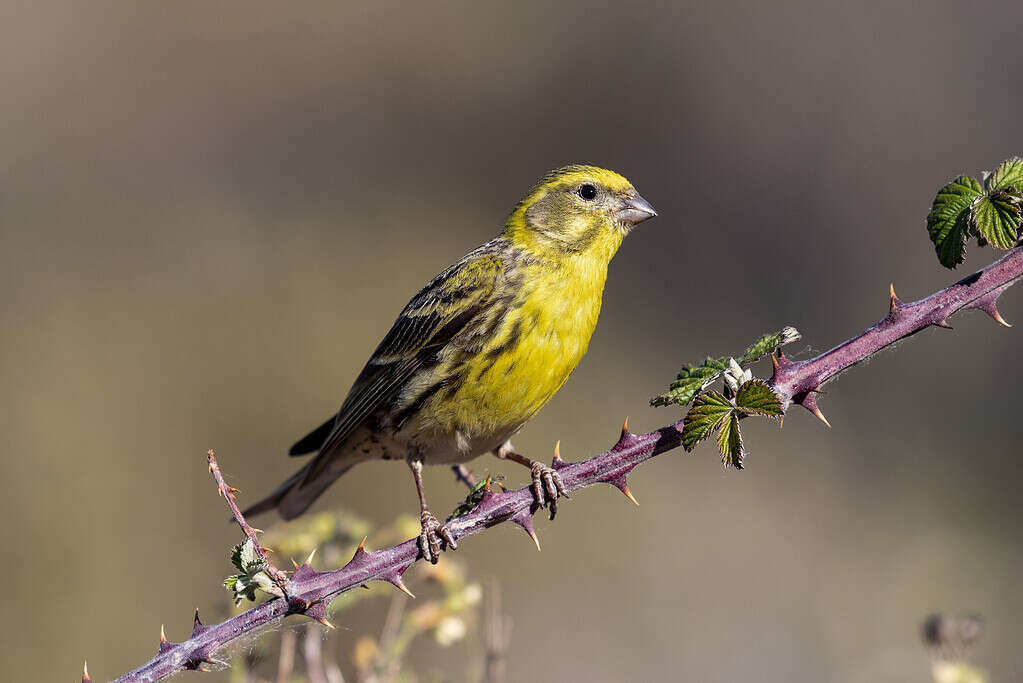
The European serin is the smallest of the true finches in the Fringillidae family.
©Wirestock/iStock via Getty Images
The European serin (Serinus serinus) is the smallest of all the members of the Fringillidae family. This yellow bird, heavily streaked in grayish-green, resides in Europe and northern Africa. This bird tends to prefer open woodlands, parks, and fields with access to seedy plants. They often opt for coniferous trees or shrubs when selecting nest locations. Females build cup-shaped nests from grasses, leaves, moss, and other plant fibers. They line the nest with softer materials including feathers and animal hair. European serins lay 3 to 5 eggs per clutch.
Yellow Canary
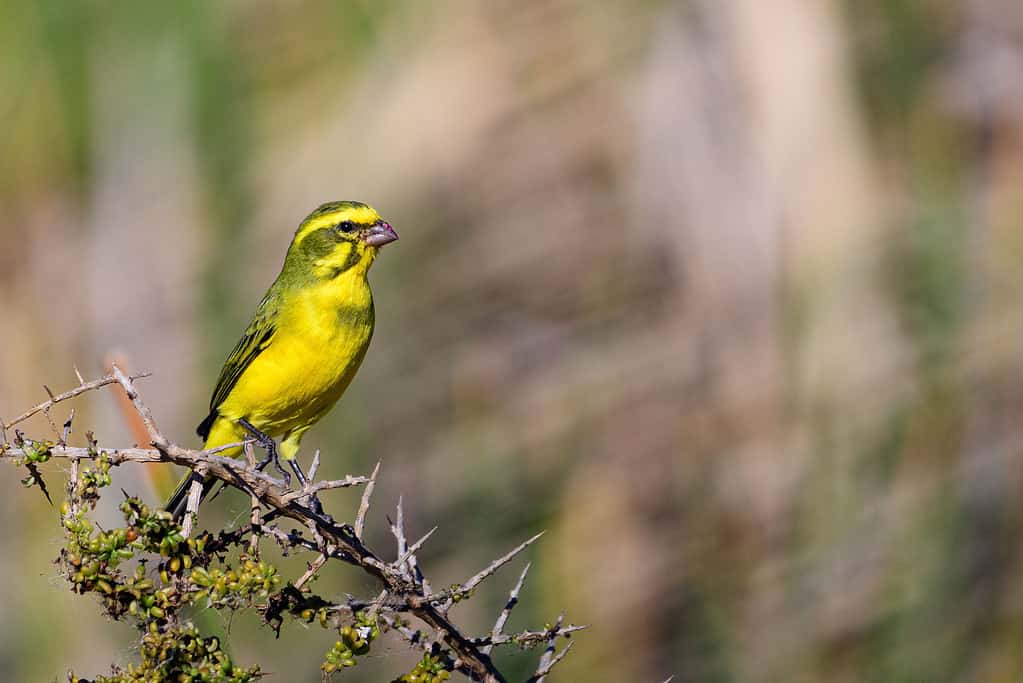
The yellow canary lives in the southern parts of Africa.
©Wirestock/iStock via Getty Images
The yellow canary (Crithagra flaviventris) lives in the southern part of Africa, including South Africa, Lesotho, and parts of Namibia, Botswana, and Angola. This member of the Fringillidae family has bright yellow underparts with greenish-yellow upper parts. It used to be included in the same genus as the Atlantic canary, but was reclassified in 2012. Yellow canaries reside in shrublands and in the Karoo, a wide-open, arid plain in South Africa. They build small, cup-shaped nests in the scrub using available materials.
Other Yellow Finches
Bird taxonomy is complicated and ever-changing based on new information gleaned by scientific observation and study. Some birds were named finches a long time before anyone knew that they really belonged in a different family than Fringillidae. Several of these yellow finches belong to the genus Sicalis in the Thraupidae family of tanagers. We know based on new evidence that the yellow finches in this genus are not true finches. But they still carry the name finch, and will likely continue to do so because changing the common names of birds can prove quite difficult. Below are two examples of well-known finches from the Sicalis genus.
Saffron Finch
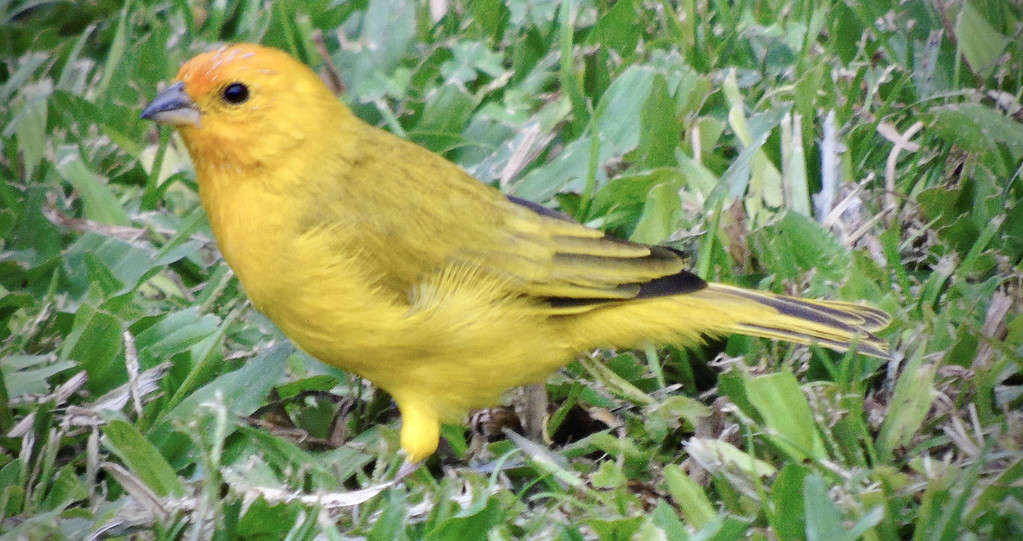
The saffron finch has an orange crown with heavily streaked back and wings.
©samuel howell/iStock via Getty Images
The saffron finch (Sicalis flaveola) resides in the lowlands of South America, with the exception of the Amazon Basin. They have also been introduced in Hawaii and Puerto Rico. These bright yellow birds have an orange crown and a heavily streaked back and wings. Unlike true finches, which usually engage in monogamous mating, the saffron finch engages in polygamy. They also differ in where they choose to nest. Most true finches build cup or bowl-shaped nests in trees or shrubs. These yellow finches nest in cavities. They may use abandoned nests made by other species, or make nests of their own in natural or artificial structures.
Orange-fronted Yellow Finch
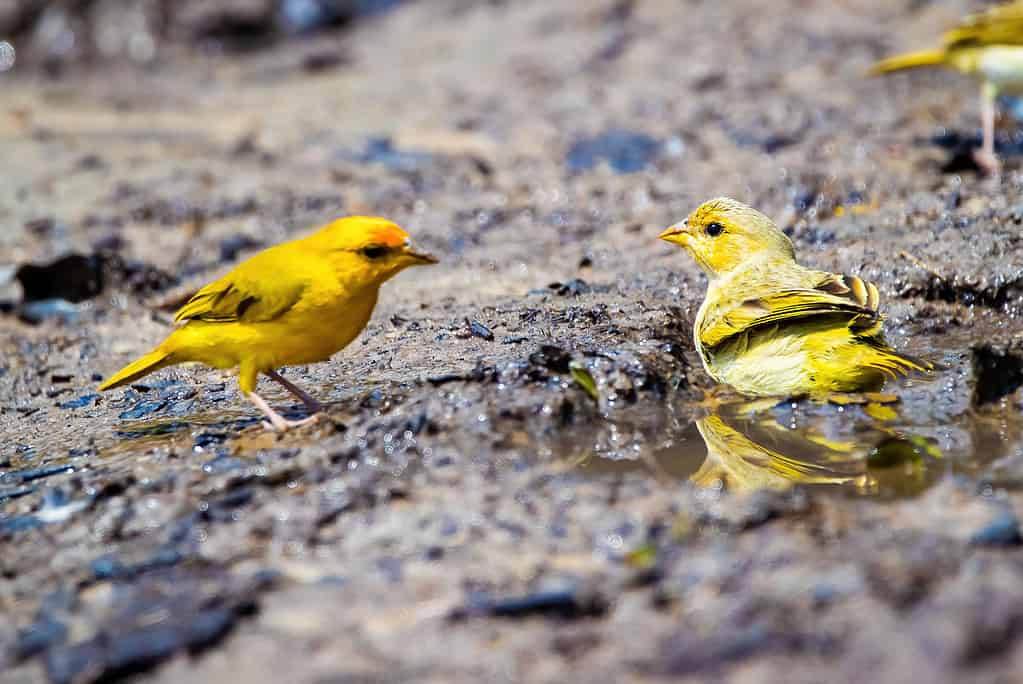
Though similar in appearance to the saffron finch, the orange-fronted yellow finch is smaller with fewer streaks.
©GummyBone/iStock via Getty Images
The orange-fronted yellow finch (Sicalis columbiana) lives in South America along a highly fragmented range. One subspecies inhabits parts of Colombia and Venezuela, while another lives along the Amazon River and further south, in the east-central part of Brazil. Orange-fronted yellow finches closely resemble saffron finches. Both have bright yellow coloring and an orange patch at the front of their head. The orange-fronted yellow finch is smaller, though, and has fewer streaks. This species tends to stick to grasslands, forests, disturbed forests, and shrublands near the water and has been known to build cup-like nests in trees or shrubs using available materials.
The photo featured at the top of this post is © neil bowman/iStock via Getty Images
Thank you for reading! Have some feedback for us? Contact the AZ Animals editorial team.







